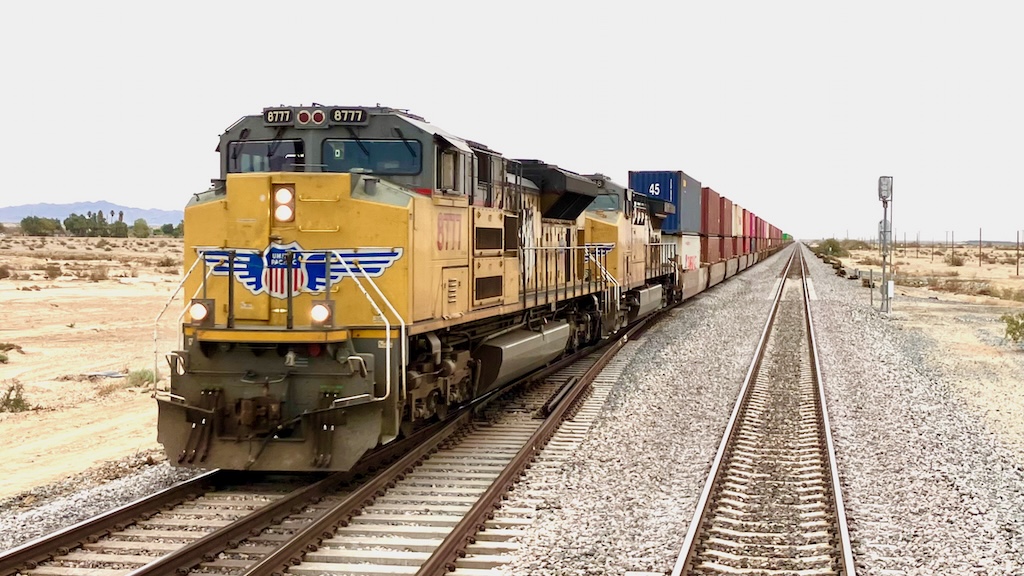
The only thing that’s certain these days, intermodal analyst Larry Gross says, is uncertainty.
And that makes it difficult to whip up an accurate short-term intermodal forecast, he told an Intermodal Association of North America webcast today.
But Gross says that gathering economic storm clouds — new tariffs, the end of an import surge, diminishing hopes for tighter trucking capacity, sagging consumer and business confidence, and the potential for stagflation — will not help intermodal volumes this year. “I see a lot more downside risk than upside,” he says.
Even with President Donald Trump set to announce broad tariff plans on April 2, Gross says there will still be uncertainty surrounding global trade.

“What we’ve seen here is that when there is a deal it’s never quite a done deal, but just a starting point for further negotiation,” Gross says about proposed tariffs. The administration, he notes, has typically modified its tariff plans based on concerns raised by various industries.
“So where things land and how long they stay that way is a big question mark,” Gross says. “And that is an important point because what that does is create continued uncertainty.”
Manufacturers, for example, are unlikely to make investments in new or expanded plants when there’s no certainty that tariffs will remain in place or last beyond the current administration, Gross says.
“It’s very hard to plan when you don’t know what the future reality is going to look like. So what that means in the near term for all of us is that there’s going to be very limited effects on the overall flows of international trade,” Gross says.
Supply chains won’t be able to change quickly, he says, and they won’t change until there’s clarity.
Roughly half of intermodal volume is international containers, while a substantial share of domestic intermodal depends on imported consumer goods that have been transloaded into 53-foot containers.
Yet concerns over potential tariffs prompted companies in the U.S. to pull forward their imports, which helped propel a surge of cargo landing at West Coast ports that boosted BNSF and Union Pacific international intermodal volume, as well as their domestic transload container volume.
BNSF’s intermodal volume is up 10% for the year to date, while UP’s volume is up an outsized 16%.
The rising tide of imports is one factor behind the 8.2% year over year growth in intermodal volume through the first 12 weeks of 2025, according to Association of American Railroads data.
“The surge is over, but the end of a surge doesn’t necessarily mean that we’re at the beginning of a huge decline,” Gross says.
The tariff pull-forward has changed the traditional seasonal traffic patterns. Typically, February would be a low point and import volume would begin growing in March. “I am not really too optimistic that we’re going to see that this year,” Gross says, noting that warehouse inventory is high and must be worked down before imports rise again.
Another wildcard, Gross says, is the U.S. Trade Representative’s proposed fees on Chinese-built or operated ships calling at American ports.
Vessels operated by Chinese companies would face a $1 million port call fee. Ships built in China would have to pay a $1.5 million fee per port call. And any shipping line that has placed more than 50% of its new vessel orders with Chinese shipyards would incur a $1 million port entry fee.
The White House says the fees would be used to subsidize the U.S. shipbuilding industry, which no longer produces commercial vessels in meaningful numbers. The administration says the plan also would reduce the global dominance of China’s shipyards.
The proposal was roundly criticized during public hearings last week. Gross says the pushback is likely to at least produce revisions to the plan.
“If it’s implemented as has been proposed, it has major implications in terms of rerouting trade flows,” Gross says. “And that could happen in a real hurry.”
Ships with ties to China would likely limit their U.S. arrivals to major ports at the expense of smaller ones, Gross says. Philadelphia, Baltimore, and Charleston, S.C., would be victims, Gross says, while winners on the East Coast would include New York/New Jersey and Savannah, Ga.
The proposal also might prompt importers to shift their U.S.-bound freight to Canadian and Mexican ports to avoid the fees, Gross says. That would boost the fortunes of Canadian National and Canadian Pacific Kansas City as overall Canadian cross-border intermodal volume has slumped due to labor unrest last year at the railways and ports.
The other wrinkle in international intermodal is the gradual shift of traffic back to East Coast ports. West Coast ports — particularly Los Angeles and Long Beach, Calif. — gained market share last year amid concerns of a potential dockworkers’ strike at East Coast ports.
With a new contract in place, shippers are now sending their imports back to East Coast ports.
“From a West Coast standpoint, we’re going have a double whammy of the lower imports in general, plus lower share,” Gross says. And that will be an intermodal headwind because containers that arrive at East Coast ports are less likely to move inland by rail due to shorter lengths of haul.
Domestic intermodal has more growth potential in the short-term, Gross says. Domestic intermodal has been slowly regaining market share from trucks for the past six months as truck capacity has tightened somewhat.
If there’s an economic downturn later this year, Gross says it may be an advantage for domestic intermodal. “History would say that in difficult economic conditions, particularly when people are not in a hurry, intermodal is able to gain share,” Gross says.
And that could boost intermodal’s fortunes. “I’m a little bit optimistic with regard to the share gain,” Gross says. “If we continue to gain share, that will more than offset any declines that we see in an overall volume.”
Railroad intermodal service should not be a barrier to domestic growth. By most measures, the Class I railroad intermodal networks remain fluid despite operating a tad slower than the average over the past few years, Gross says.





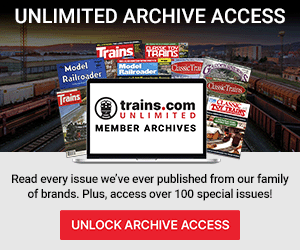

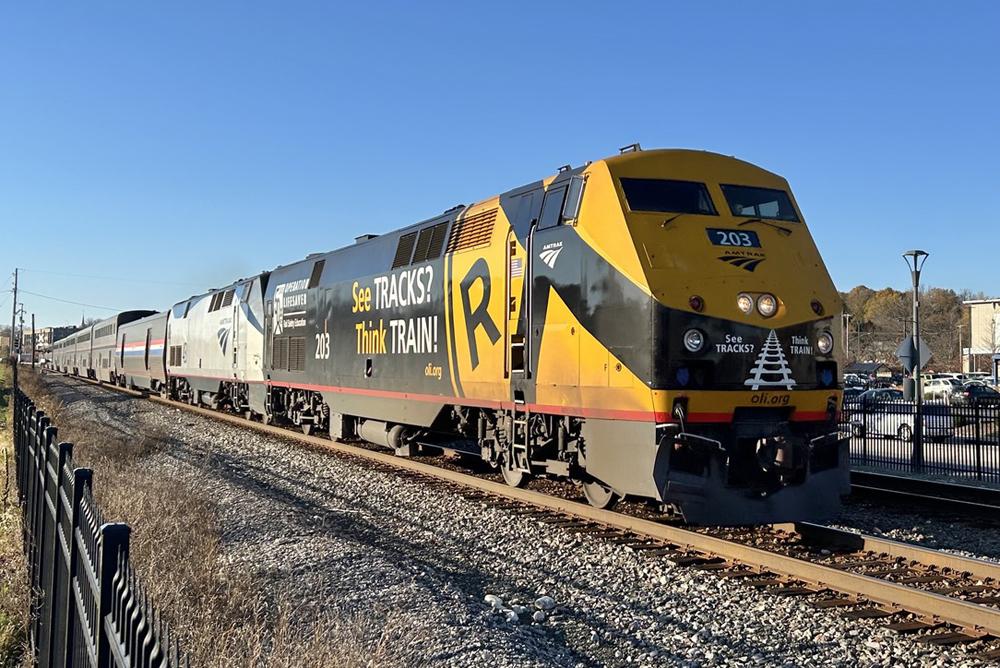
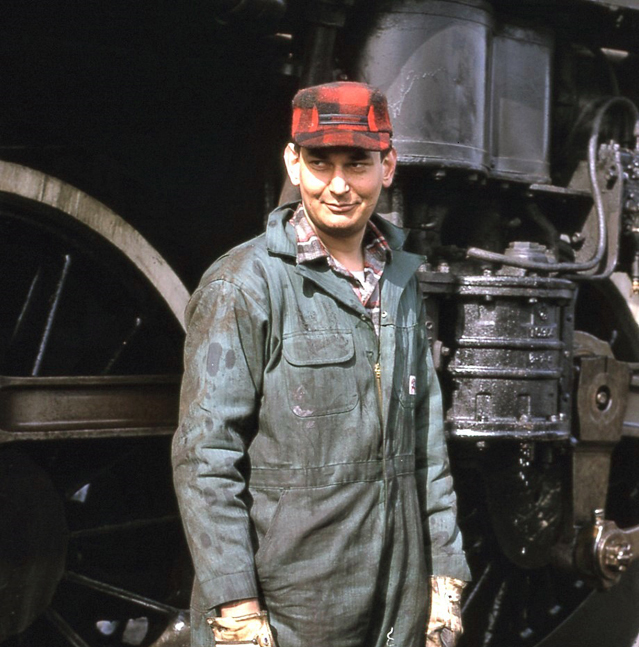
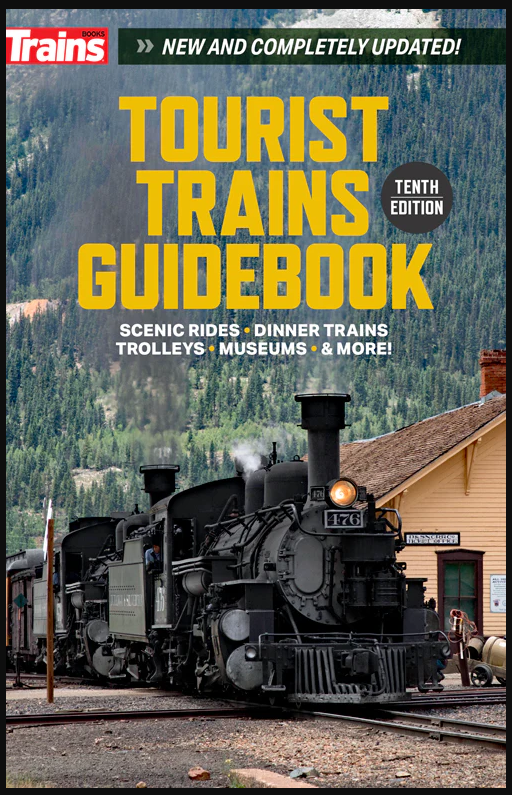
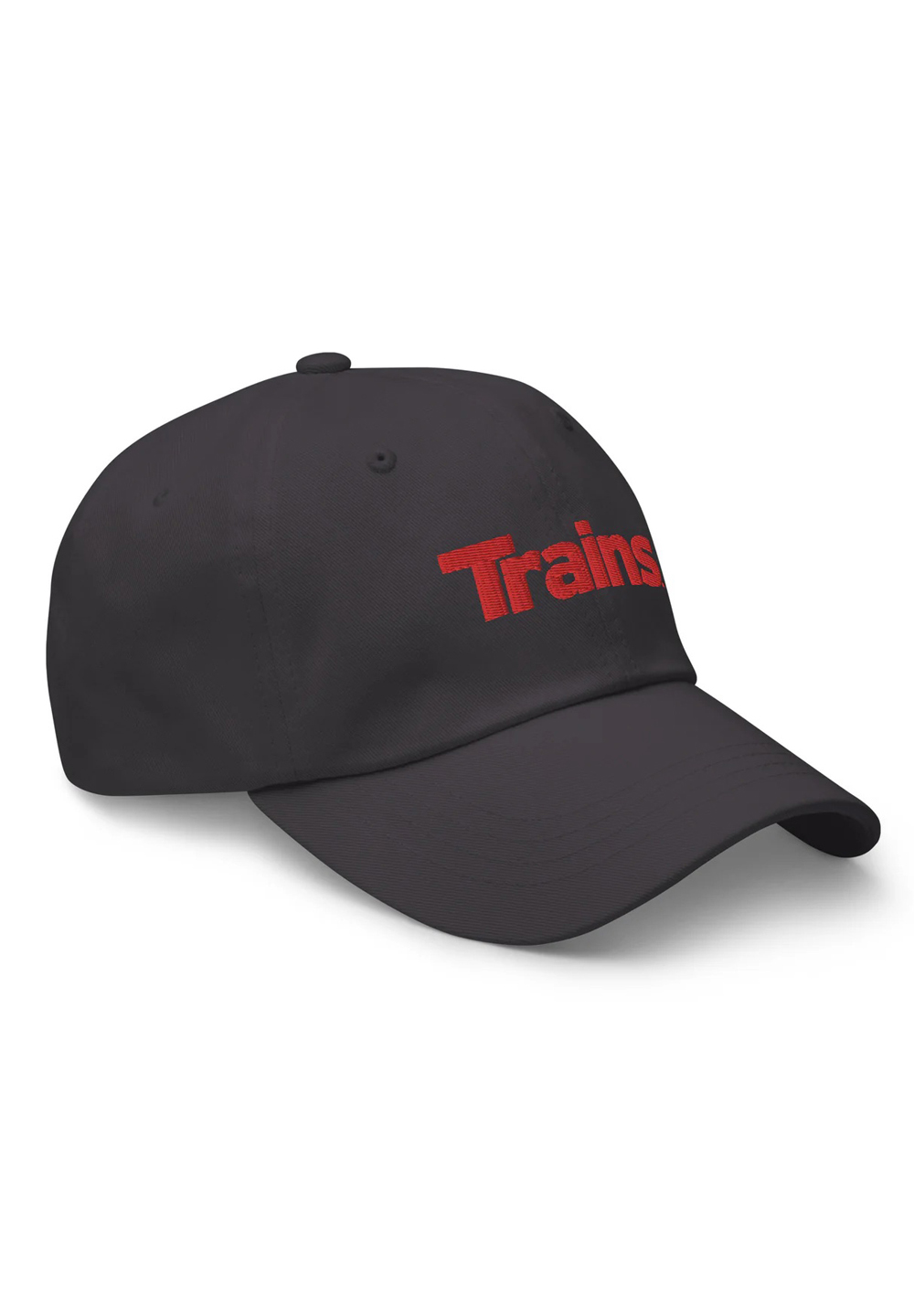
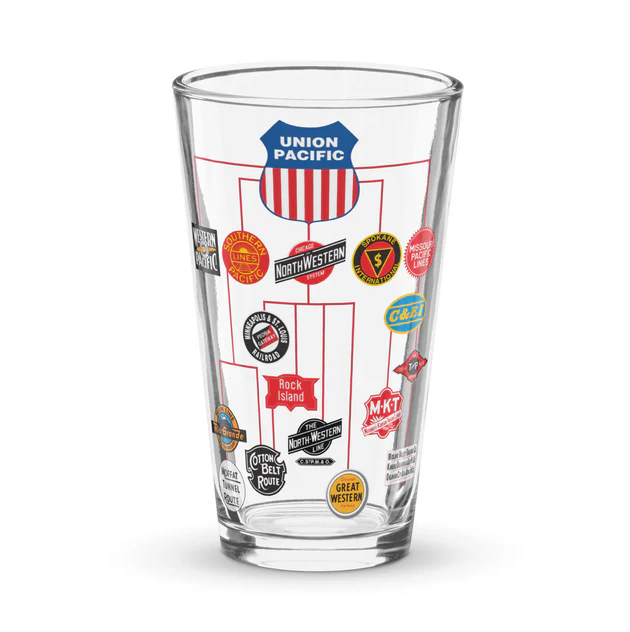
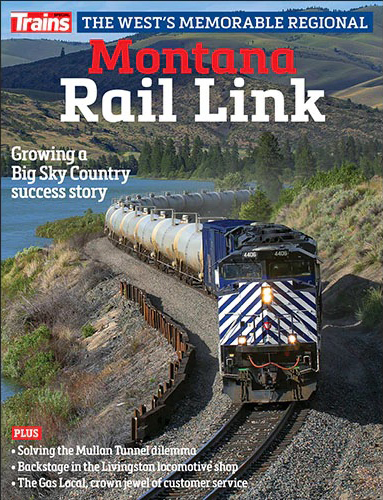
Regarding Bill Stephens’ photograph of UP 8777, this is the first I’ve noticed of what appear to be two red lights at the top of the cab between illuminated number boards. I wonder about their purpose. Reminds me of the red “Mars lights” of long past Southern Pacific and Seaboard Coast Line engines which activated with an emergency air brake application to warn oncoming trains on double track. Any thoughts? WALTER FRITZ, OBER, INDIANA…574-772-4766
Red. Indicated the end of a train. A train, be it a single engine, a group of engines, or an engine(s) with cars, must have a marker on the rear end. In the (relatively rare) situations when the last element in a train would be a locomotive, the red lights would be lit.
To switch tracks and it’s possibly RR related, is Larry Gross related to Michael Gross?
Human nature at play when “uncertainty” drives fear instead of opportunity. For the hedge funds that want guaranteed profit and elimination of all risks to maintain it, this is a freak out to them.
Companies can look at this several ways, but I would think they would be seeking out opportunities as the tariffs begin to rebalance trade pipelines.
If they have a good ear to their customers needs, get timely feedback from shippers and suppliers on the adjustments, I think the Class 1’s will do just fine.
If the tariffs bring back some domestic industrial base, the biggest winner will be the short line holding companies. But that could be a long term play.
If I’m not mistaken, two magnificent EMD SD70ACe locomotives from the UP fleet, pulling a long & heavy intermodal freight train, grace Bill Stephens’ photograph…
Dr. Güntürk Üstün
Maybe they will be able to finally clear up all of their congestion issues.
The NS 3B South main line between Mobile and Birmingham Alabama received millions of state tax dollars a couple of years ago to extend sidings and install signals in order to start intermodal service out of the Port of Mobile. This work has been nearly completed. The idea at the time was it would help relieve truck traffic on I-65 which is crowded with intermodal traffic. But I just heard today that the proposed new intermodal service has supposedly been cancelled. I hope this info is incorrect since it’s definitely needed to relive traffic on I-65. Or at least Alabama should claw back the money given NS. I can’t understand why NS wouldn’t want this traffic.
Class 1s are directed by the central economic planners NOT to offer short-haul intermodal. The recent Trains article on the demise of NS RoadRailer is instructive.
The taxpayer funded “inland port” in Alabama will be like the $30M Andrew Cuomo version at DeWitt yard… an empty white elephant with 2 idle gantries and empty tracks.
Railroads need to be forced through regulations to offer short haul intermodal and carload services
Gregg I agree. When the inland port was first announced and NS received the funds to upgrade I had my doubts containers from the port would ever be transported to B-ham by rail. The short haul just didn’t seem to fit current Class 1 thinking. Still I was hopeful. The NS 3-B South runs directly behind my house and I’d have liked to see intermodal pass by. And like I said before, it would have really been nice to have less truck traffic on I-65.